“Do you have any tips on how to track calories at restaurants?”
I get asked this question on a weekly basis, and when it comes to dieting, most people want to to still enjoy their social life.
Here’s the cool part: You CAN do this successfully and stay on track with your fat loss goals.
Here’s the part you need to understand: It’s not going to ever be PERFECT.
Before we move on, I need you to accept the fact that tracking restaurant calories is not going to be accurate, but by the time you are done reading this you will have 5 main strategies to help you stay on track with your calorie deficit while enjoying a couple meals out on the town.
5 Strategies for How To Track Calories At Restaurants
Keep in mind this guide is for someone who eats out regularly. If you are someone who eats out once a month or even less frequently, I don’t think you should be tracking your calories, you should let loose and enjoy yourself.
If, however, you are someone who eats out multiple times per week, this guide is going to help you stay on track. Here are 5 strategies that are going to help you do that…
#1 Look Online To See If The Restaurant Has Nutrition Facts
Most restaurants, especially corporate chains like Chipotle or Panera, have detailed nutrition databases in Myfitnesspal or on their websites. With a quick search on your favorite tracking app, you can get some pretty accurate calorie info.
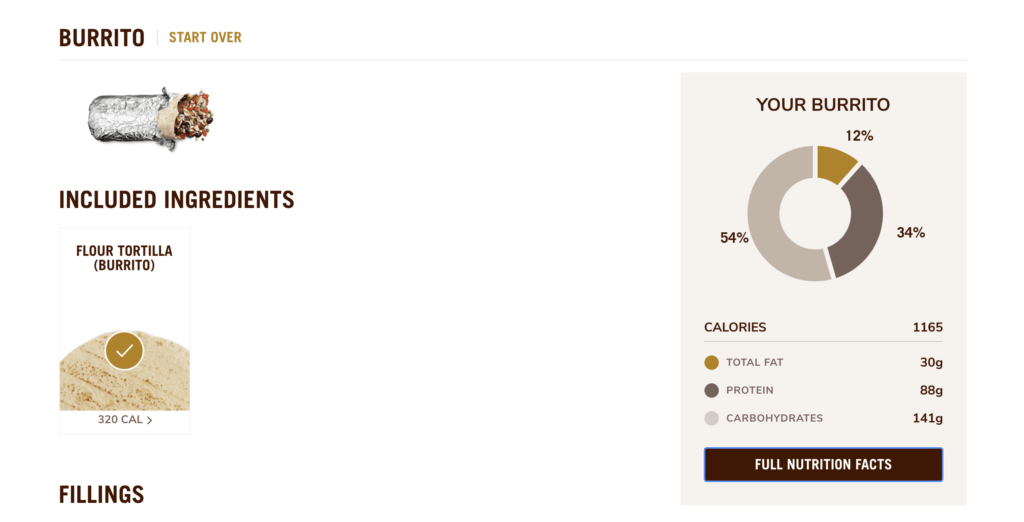
Chipotle’s website even has this cool calorie calculator to figure out the EXACT macros for your meal. Pretty convenient for those of us focusing on not just calories, but also the composition of those calories.
If you been diligent about tracking your calories thus far, you know how easy it is to overshoot those calorie targets if you don’t plan ahead. For example, this burrito above is over 1,000 calories, so if you didn’t plan the rest of your day around this meal, you would easily be put into a calorie surplus. However, you could still get a wimpy burrito bowl, which (let’s be honest) just isn’t nearly as good, but will still help you to stay in a calorie deficit and lose fat.
Keep in mind, most places that have this kind of detailed calorie information are going to be chain restaurants, so if you are going to a less established establishment, we will need some different strategies…
#2 Use Myfitnesspal to see if you can find a similar meal
Let’s say you are going out for Mexican food. You know that you are going to get tacos, because well…#tacosquad. They are the ultimate staple food in me and my online coaching clients diet for a reason—healthy carbs (corn tortillas), lots of protein (chicken, shrimp, fish, steak), and usually some sort of veggies.
So, you look at the menu on their website and decide you are going to get 3 steak tacos (carne asada).
You see that they come with guacamole and pico de gallo.
First, we will search carne asada tacos in Myfitnesspal and see what the average calories are per taco.
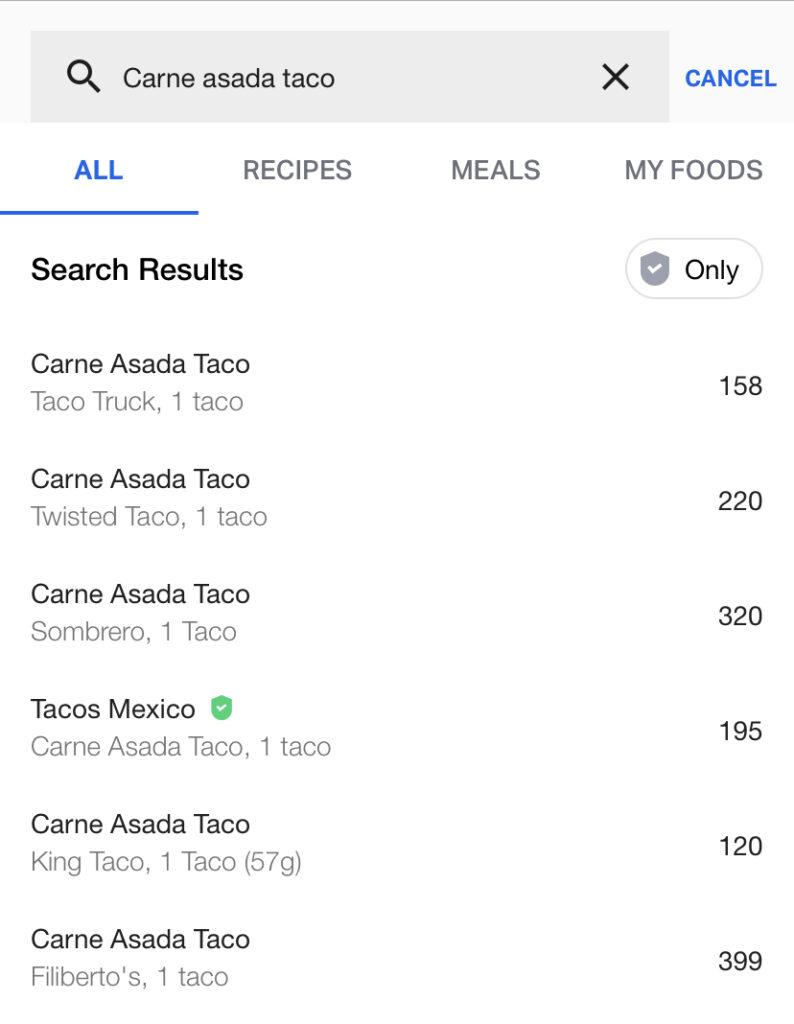
We can see that the calories range from 158-400, with an average of around 200-220 per taco. Therefore, the best bet here would be to choose the 220 calorie taco. We got 3 tacos, so that puts us at 660 calories so far.
Now, keep in mind, we still need to account for the guacamole this restaurant uses.
We can estimate that each taco would have around 2 Tbsp. of guacamole per taco. Which would be around 50 calories per taco.
This puts our total meal at 810 calories.
Pretty easy right?
But what happens when we have a more complicated meal? Let’s say we actually just want to get a carne asada plate and make it a full dinner…
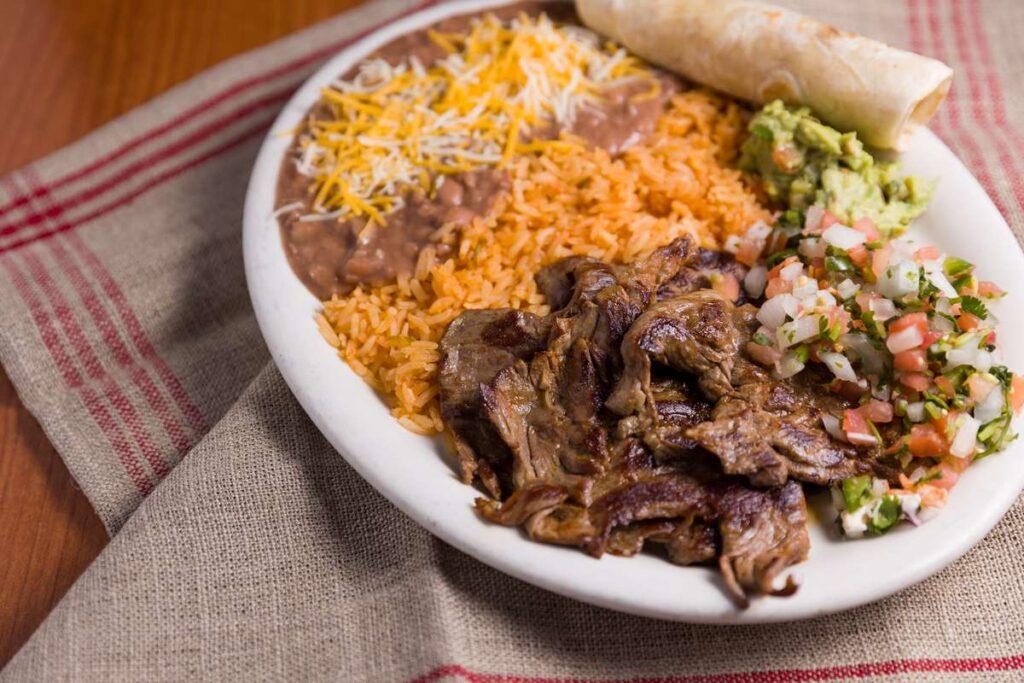
For this meal, we are actually going to figure out the calories by individual ingredient rather than just typing “carne asada plate” in Myfitnesspal. Keep in mind, this meal is going to be harder to track, and will be a LOT more calories than if we kept it simple with the tacos. For this meal, we are going to choose some of the higher calorie values in Myfitnesspal to make sure we don’t go over our calorie budget.
First the meat.
I am guessing this is somewhere between 4-5 ounces of cooked carne asada. 5 ounces of carne asada is around 250 calories.
Next, the rice. We are going to assume this is about 1 cup of Mexican rice. Most entries for a cup of Mexican rice are between 200-300, so we will add another 250 calories.
Next the beans. A cup of refried beans is around 200-300 calories. We will add another 250 calories, plus around 1/4C. of Mexican cheese, which will be around another 160 calories.
Then we’ve got about 4 Tbsp of guacamole, which is another 200 calories.
Then the medium tortilla, which is around 170 calories.
Next, we want to add 1 Tbsp. of oil to make sure that we are accounting for any oil and lard that is added to the meal. Keep in mind, 99% of restaurants are going to add extra oil that they use to cook with.
That’s another 120 calories.
In total, this plate above clocks in at a whopping 1400 calories.
#3 One plate method
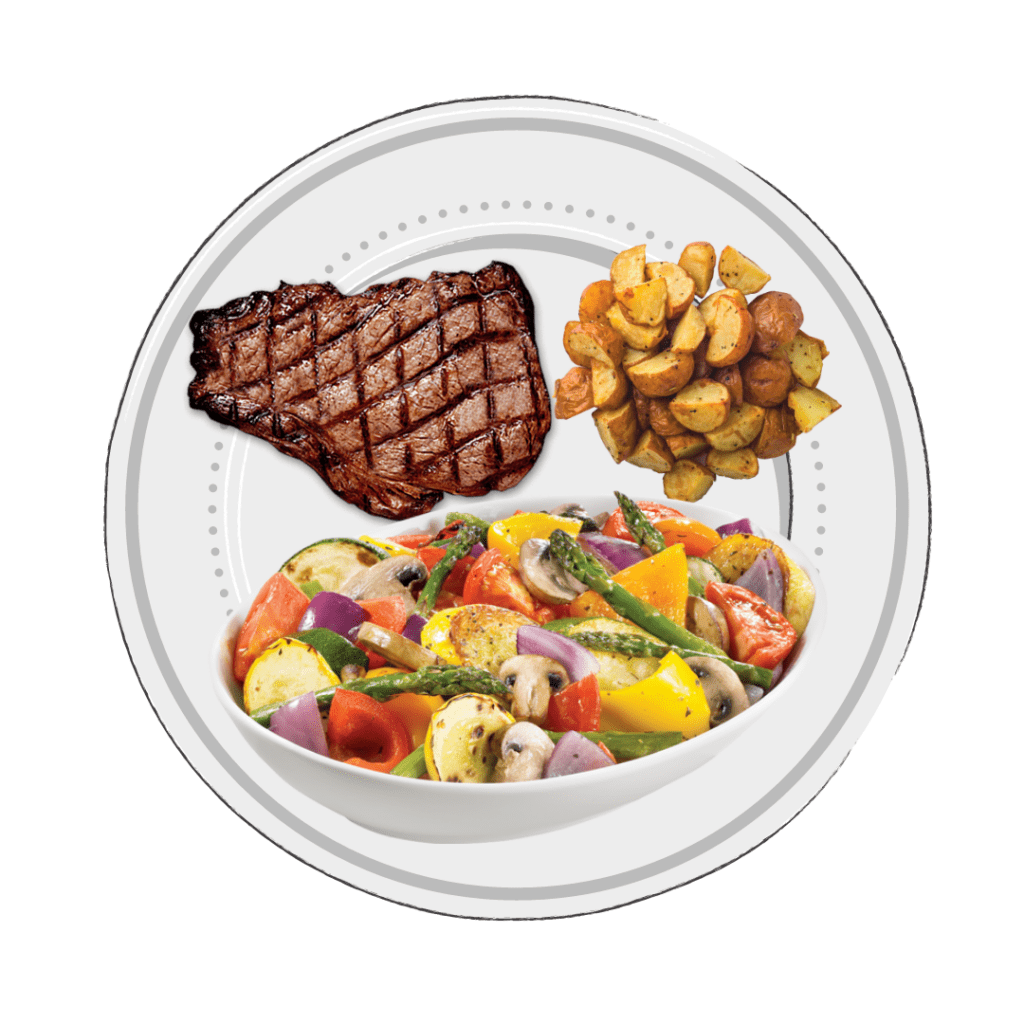
I generally use this method with clients who get incredibly stressed out trying to figure out the calories of complicated meals when they are out at restaurants.
Here are the guidelines:
- Everything must fit onto one plate. Not a stack of piled high goodies like you are at a Mongolian grill either…just a plate. Once the plate is done, you are done
- Palm of protein. The portion of protein must be the size of your palm. In the carne asada case above, this would be appropriate.
- Half veggies. Half the plate must be vegetables. Vegetables are less calorie dense, and will help you stay full and get plenty of fiber and other micronutrients.
- A cup of carbs. About a cup or a cupped handful of carbohydrates should be on your plate. So, for the example with the carne asada plate, the rice, beans, or tortilla would be fine, but not all 3. Just pick one.
Using this example above, we would have cut out the tortilla, the beans, and the guacamole, replaced them with extra fajita veggies, and maybe a side of extra salsa (minimal calories).
This would have made the meal above around 620 calories instead of the 1400 that it originally was.
See why this method works? Pretty cool huh?
Best part of all, you didn’t even have to track calories! No stress.
#4 You can’t mess this up!
Estimating calories at restaurants is actually pretty challenging, but does that mean you shouldn’t try?
Of course you should try! This is how you get good at anything.
If you want to eventually not track calories in the future, investing the time and energy now will give you the knowledge of being able to look at a plate of food and tell whether it’s going to help you reach your goals or not. So practice going to restaurants, estimating calories, and stop making it so stressful for yourself!
You are not going to screw anything up by going over a couple hundred calories once or twice per week. As a matter of fact, you ARE going to weigh more on the scale the next day after a big restaurant meal.
PS: It’s not because you gained a pound of FAT.
Why?
You would have to eat 3500 calories above your maintenance just to gain 1 pound of body fat. This means that if your maintenance is 2000 calories, you would have to eat 5500 calories in one day, which I guarantee you won’t.
Restaurant meals also contain more sodium and carbohydrates. Therefore you are going to be holding onto more water, and will weigh more in the morning.
Do NOT starve yourself the next day just because you weigh a couple pounds more after your restaurant meal. Remember, it’s just WATER.
#5 What NOT to do
Do NOT do a bunch of cardio to try and burn off all of those extra calories. It’s just WATER.
Do NOT beat yourself up for having a night out with friends and eating a burger and fries.
Do NOT skip breakfast and wait until 2pm to have your first meal because you are “not hungry”. This is not healthy, and will lead to further binging type behaviors.
WHAT TO DO INSTEAD: get back on track and continue your normal eating habits. Keep learning how to track restaurant calories every time you go out!
BONUS TIP
I always tell my online coaching clients to add 1-2 Tbsp of oil to their meals. This will account for the oil that most cooks use to saute their vegetables, meat, rice, or any other side dishes they use.
Conclusion On How To Track Calories At Restaurants
You should now be equipped with 5 strategies on how to track calories at restaurants a couple times per week and stay on track with your nutrition.
The main thing I hope you learned is that it is never going to be perfect. You are going to mess up, you’re going to weigh more on the scale the next day, and you ARE going to feel like an absolute failure for overdoing it sometimes.
That’s okay. As long as you get back on track, there is no way to mess this up! The only way to mess this up is to give up completely.
If you’re anything like me, you learn more from your mistakes than your successes, so take each mistake you make as a learning experience and try to tackle them as they come!
Hope you found this guide on how to track calories at restaurants useful, please leave a comment below with any comments or questions!

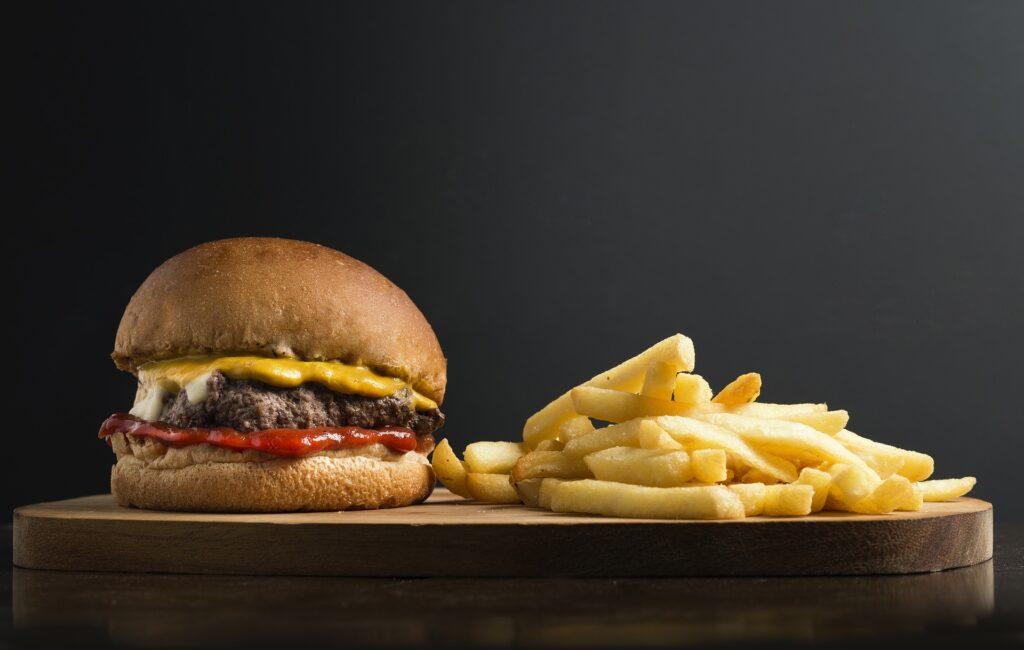
This was very helpful. Gonna try the plate method with complicated middle eastern food at family gatherings. We usually have kabobs or chicken which is generally the protein or a curry with protein paired with carbs like rice or naan. May need to start accounting for the oil and butter which is a popular ingredient in our dishes!
Love it Fazia! The one-plate method has worked extremely well for me and my clients!
Pingback: Counting calories: Do You Weigh Meat Before or After Cooking? | Chef Jeffrey's Kitchen